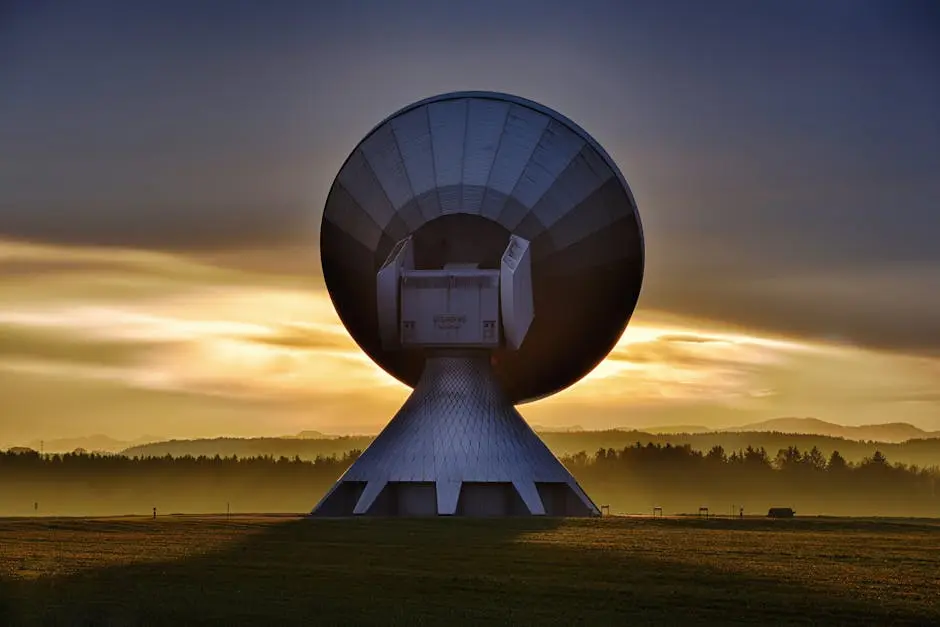Broadcast services technology has been rapidly evolving, driven by the need for more efficient and higher quality content delivery. In this blog, we’ll explore some of the most innovative breakthroughs that are shaping the future of broadcasting.
The Rise of IP-Based Broadcasting
IP-based broadcasting has revolutionized the way content is delivered, offering significant advantages in terms of scalability, flexibility, and cost-efficiency. With the ability to transmit high-quality content over the internet, broadcasters can reach a global audience more easily than ever before.
One of the most important aspects of IP-based broadcasting is its scalability. Traditional broadcasting methods often required significant infrastructure investments to reach larger audiences, but IP-based systems allow broadcasters to scale their operations without major hardware changes. This flexibility makes it easier for smaller players to enter the market and quickly adapt to changing demand. Additionally, using standard internet protocols ensures that content delivery systems are consistent with the latest network technologies, which enhances compatibility and efficiency.
Moreover, IP-based broadcasting supports a more flexible approach to content distribution. Broadcasters can tailor their content to specific geographic regions or demographic groups without the need for separate infrastructure. This targeted approach not only increases audience satisfaction but also optimizes resource use, ensuring that network capacity is used most efficiently. Furthermore, it opens the door to more personalized experiences for viewers, potentially changing how we consume media at a fundamental level.
Adoption of Cloud Technologies
Cloud technology has become an integral part of modern broadcast services. It offers robust solutions for storage, processing, and distribution of content, allowing for more agile and responsive operations. This has enabled broadcasters to meet the growing demands of consumers for on-demand content.
When discussing the adoption of cloud technologies, the first thing to note is the transformation in content storage and accessibility. Traditional storage methods are not only expensive but also limit the capacity and speed with which content can be accessed. Cloud storage, on the other hand, allows broadcasters to store vast amounts of content with ease and retrieve it instantaneously. This means no more waiting for content delivery; everything is available at your fingertips.
Another key advantage of cloud technologies is their potential to democratize the broadcasting landscape. Smaller broadcasters now have access to the same advanced technology as major networks, leveling the playing field. Cloud services also enable real-time collaborations between global teams, making it simpler to produce and manage content across various regions. Plus, the cloud’s robust security features offer peace of mind by minimizing risks associated with data breaches and unauthorized access.
The Impact of Artificial Intelligence and Machine Learning
AI and machine learning are transforming broadcast services by automating complex processes such as video editing, personalized content recommendations, and targeted advertising. These technologies enhance the viewer experience and increase operational efficiency for broadcasters.
Stepping into the realm of artificial intelligence and machine learning, one can’t help but be amazed at the possibilities. In broadcasting, AI is used to automate video editing processes which drastically reduces the time and effort needed to prepare content for airing. Algorithms can be trained to select and piece together clips that are most engaging to viewers, ensuring that content is not only timely but also captivating. This automation allows human editors to focus on more strategic creative tasks instead of tedious labor.
Machine learning algorithms are also paving the way for hyper-personalized content experiences. By analyzing viewing habits and preferences, these systems can recommend shows and programs tailored specifically to individual viewers. Not only does this improve viewer satisfaction, but it also fosters deeper engagement and loyalty. Meanwhile, on the advertising front, AI-powered analytics deliver targeted ad experiences to specific demographics, increasing the effectiveness of advertising campaigns and optimizing revenue for broadcasters.
The Emergence of 5G and Its Influence on Broadcasting
The advent of 5G technology promises to reshape the broadcast landscape by providing unprecedented speeds and low latency. This enables broadcasters to deliver ultra-high-definition content and real-time streaming without buffering, significantly improving the viewer experience.
The introduction of 5G technology is not just an incremental improvement over its predecessors; it represents a quantum leap in connectivity capabilities. With its lower latency and higher capacity, 5G can handle more data at faster speeds than ever before. This is particularly significant for live sports broadcasts, where every second counts to maintain continuous live streaming without interruptions. Viewers can watch the action unfold as if they were present in the stadium, devoid of the frustrations posed by buffering that we’ve grown accustomed to over the years.
Innovations in Interactive and Immersive Content
With advancements in virtual reality (VR) and augmented reality (AR), interactive and immersive content is becoming increasingly common in broadcast services. This allows audiences to engage with content in a more dynamic and personalized manner, driving higher engagement levels.
Immersive and interactive content has started to change the face of broadcasting in a way that traditional content never could. Virtual reality places viewers right in the center of the action, offering a 360-degree experience that makes them feel as if they are part of the story. Similarly, augmented reality layers additional information and graphics onto what the audience sees, enhancing their understanding and engagement. This capability transforms how stories are told and enriches the viewer’s experience beyond what conventional media afforded.
Another exciting application of VR and AR in broadcast services is in education and training. By offering experiences that simulate real-life scenarios, these technologies provide immersive learning opportunities previously impossible. For example, medical students can enter a virtual operating room to learn surgical procedures without the need for physical presence, or history buffs can walk through a historically accurate reconstruction of ancient sites. Such applications demonstrate the exciting breadth of possibilities available with interactive content, changing how knowledge and stories are shared with the world.
The Future of Broadcast Services
As technology continues to evolve, the world of broadcast services is expected to see even more groundbreaking changes. These innovative breakthroughs not only enhance the quality and efficiency of content delivery but also open up new possibilities for creativity and storytelling.


